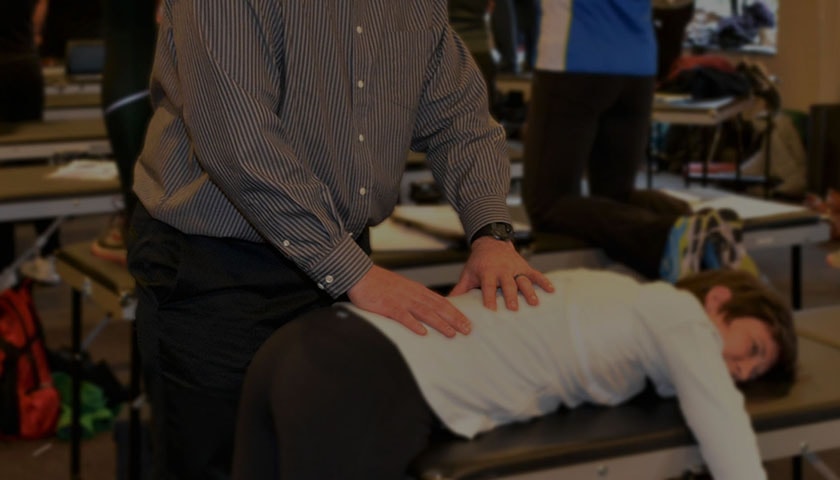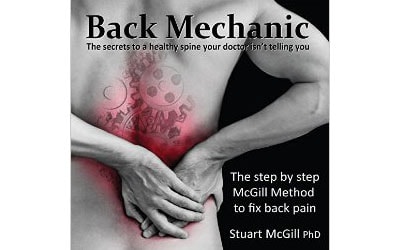The Expert Biomechanical Consultation
One-on-one consultation, individualized for your specific needs.

Read through the frequently asked questions.
Frequently Asked Questions

This section contains much-needed information prior to your expert biomechanical consultation. To best prepare for your assessment, please read through and feel free to ask any follow-up questions you may have. Your questions are not unique, please feel open to ask so you are prepared and know what to expect.
-
Who needs this consultation?
What is the expert biomechanical consultation?
Can I bring someone along to help me?
Is this guaranteed to work every time?
What about Dr. Stuart McGill, PhD?
What do I need to do before coming in?
What will I go away with?
Q. Who needs this consultation?
Patients requiring this type of in-depth assessment have typically experienced failed management with usual care for low back pain (LBP). They have often seen one or more Chiropractors, Physical Therapists, Medical Specialists (Orthopedic or Neuro Surgeon), or other therapists or trainers. Despite this, their back troubles continue with little or no change.
Q. Can I bring someone along to help me?
Absolutely! You are encouraged to bring in a spouse, family member or friend if you'd like someone to help you. There will be a lot of information, and for some it's hard to remember everything. Feel free to bring someone with you, though you are not required to so.
Q. Is this guaranteed to work every time?
Unfortunately, the truth of the matter is no! We have all heard the advertisements that “x” or “y” is guaranteed to work. There is no such thing. The only guarantee I will make to you is that you will get my very best, and you will have my undivided attention. You should know we see patients who have failed at every corner and do very well with our approaches. It's okay to be very hopeful and expect a good result – I do!
Q. What about Dr. Stuart McGill, PhD?
You have likely been referred after finding out about Spine Biomechanics Professor, Stuart McGill. I indeed have had over 6 years of extensive training from Dr. McGill and am one of the few clinicians in the world to receive his referrals. You may or may not be familiar with his books, most importantly his book geared towards the patient: “Back Mechanic”. This book can be an excellent resource, but some of you may need help navigating your back troubles and may require some assistance.
Q. What will I go away with?
By the end of the consultation, you should have a terrific understanding of what causes pain and/or injury to your back, AND how to avoid it! You will have a treatment plan with strategies to address any deficiencies identified in the examination. For example, if a movement causes injury or pain you will have a new "movement tool" to change the way you move. Another example would be a lack of endurance in a particular muscle group – you will have a specific exercise or set of exercises (which will not continue to irritate your back - as many do!) to address this endurance deficit.
Q. What is the expert biomechanical consultation?
The consultation can be broken down into two main components: 1) the assessment and 2) the management strategies unique to YOUR assessment findings. Each of these components can be further broken down.
First, the assessment involves a detailed history of your back troubles. This is highly valuable information to the assessment process. Many clinicians are far too cavalier with this important step to understanding not only your back troubles, but also potential injury mechanisms and pain triggers.
The second component will follow the physical examination, this is a lengthy process. Often, it takes a full hour or more, to probe your back troubles and identify pain triggers, weakness, and injury. Once the detailed history and examination are complete, I will have an excellent idea of what is causing your back troubles. If it is "mechanical" in nature, the consultation will continue. Non-mechanical back troubles involve some type of non-conservative management – these are rare, but I will always consider them and need to rule them out before moving on.
Next, the management strategy sections begin, and again, there are two main areas of focus. First, the elimination of injury mechanisms and pain triggers. Because many patients are unaware of HOW their back is injured, they are unaware that their movement strategies, postures and loading conditions are continuing to injure their troubled back. These are unique to every patient and every bad back; we will take the time to find out what yours are. Second, we will also identify any deficiencies in your back, movement, endurance, stability, etc. and develop a unique and customised plan you can follow on your own at home.
By the end of the consult you will likely have more knowledge about your back then any clinician you have gone to see in the past. One of the main goals of the expert consultation is to educate you about your back so you can manage it and move on without the pain!
Q. What do I need to do before coming in?
During the visit, you will be asked to move around. Please bring appropriate attire – you may be more active than you have been in a long time. You also need to bring as much information as you can, including any and all spinal images (x-rays, MRI, CT, etc.). It is particularly helpful if you can remind yourself and outline ahead of your visit how long you have been struggling with your back and the approximate timeline, this is often hard to recall in the moment.
Resources for Patients
Helpful solutions for back pain management.Back Mechanic
The Step-by-step McGill Method to fix back pain.
In an age where a seemingly endless amount of gimmicky back products are in circulation, a definitive guide to self-assessment and rehabilitation is more essential than ever.
LumbAir
Adjustable Lumbar Support.
Promotes ideal posture and posture changes. Easy to carry for use in cars, airplanes, theatres, or for home use.
PropAir
Increasing Back Comfort in Bed.
Lying on the back causes the low back to flatten to the mattress causing spine flexion. Many people have flexion-triggered pain making back sleeping painful.




